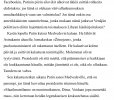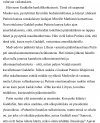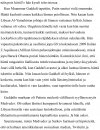Russia’s likely plans to concentrate on these areas in 2022 were revised or put on hold once Russia invaded Ukraine. The sudden
pull-out of major IT and high-tech companies from Russia, coupled with a
rapid brain drain of Russia’s IT workers, and the
ever-expanding high-tech sanctions against the Russian state may hobble domestic AI research and development for years to come. While the Russian government is trying to
prop up its AI and high-tech industry with subsidies, funding, and legislative support, the impact of the above-mentioned consequences may be too much for the still-growing and evolving Russian AI ecosystem. That does not mean AI research and development will stop—on the contrary, many 2021 trends, efforts, and inventions
are being implemented into the Russian economy and society in 2022, and there are domestic high-tech companies and public-private partnerships which are
trying to fill the
void left by the departed global IT majors. But the effects of the invasion will be felt in the AI ecosystem for a long time, especially with so many IT workers
leaving the country, either because of the massive impact on the high-tech economy, or because they disagree with the war, or both.
One of the most-felt sanctions aftereffects has been the severing of international cooperation on AI among Russian universities and research instructions, which earlier was enshrined as one of the most important drivers for domestic AI R&D, and reinforced by support from the Kremlin. For most high-tech institutions around the world, the impact of
civilian destruction across Ukraine by the Russian military greatly outweighs the need to engage Russia on AI. At the same time, much of the Russian military AI R&D took place in a siloed environment—in many cases behind a classified firewall and without significant public-private cooperation—so it’s hard to estimate just how sanctions will affect Russian military AI efforts.













